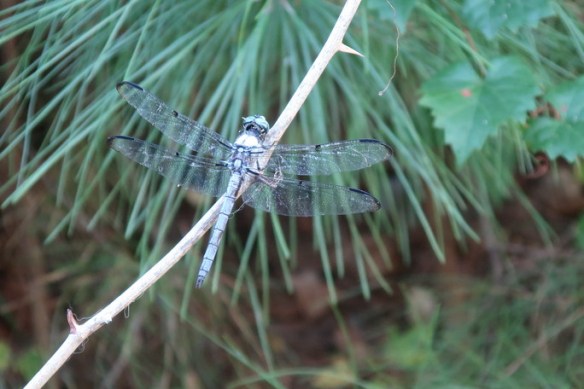Now that the big task of getting the many ( including some very large) plants trimmed, washed and moved into the greenhouse, I’m feeling rather relieved. It’s usually a race against time to get this job done before tender perennials and tropicals are subjected to an early frost. Not so this year – I’ve had the luxury of taking my time to give adequate attention to each plant. And I’m grateful for it. Even so, its a bit disconcerting that temperatures haven’t really dipped as expected. Wonder how fall and winter will pan out.
The task at hand is the clean up of garden beds and the meadow. There’s a great deal of direction to delay cutting back of plants till the spring. Leave them be for birds to forage and to provide winter interest. I have two problems with that. Firstly, my spring blooming bulbs are planted every fall within those areas. So, fully grown plants preclude proper bulb planting. One cannot get into the beds and plant around them – I tried it one year and it was ridiculously hard. I was left severely scratched up and had body parts complaining loudly of the torture of being subjected to contorting my way around.
Secondly, by late fall/early winter, any seed heads left on the plants are depleted of seeds. They’ve given it their all. Any foraging or sheltering to be done happens at ground level. And, after the first big snowfall, any upright plant is smothered down. No poetically charming winter interest to be had by way of swaying stalks or dramatic seed pods. Then, in spring, after the snow has melted, its all one slimy, unsightly mess. The task of clearing it up is gross and if not removed, the glorious emergence of the bulbs is spoiled.
However, since I’m a believer in providing for the critters and doing good things for the environment, I’ve hit a happy compromise. The beds of perennial plants stay up till the very day before bulb planting commences. This is usually during the second week of November. My cue to schedule Bulb Planting Days is when the shipment arrives – they send it at the appropriate time according to Hardiness Zones. All the cuttings are moved to the compost heap.
After bulb planting is completed, leaves fallen over the tiny lawn are removed and used as mulch over these beds.
Note: This week, I’ll be dividing certain perennials and replanting.
Similarly, in the meadow, the cut back happens just before the bulbs must go in. Here however, several plants are left to stand – they remain full in form and provide good hideaways for the fauna. The heavy leaf fall in the meadow is left in place as well. So there is really adequate food and shelter here as well as in the adjoining woods. Other shrubs on the property also provide for the wildlife.
The general cut back and clean up permits work that needs to get done now and also sets up the garden for a comfortable segue way to the spring season. Nothing is left too pristine or lifeless. Neat but not too neat though, to some human visitors, it is not neat enough!
Ultimately, I remain with the sense of satisfaction of doing what really works for my garden without neglecting the creatures that inhabit it. No principles need be compromised.
Such a balance is possible in every garden. It isn’t ever all or nothing. We don’t have to do everything the ‘experts’ say – just as in child rearing, a sincere gardener must take into account the data and current practices, then apply their own understanding, instinct and judgment to do what is best for their specific gardens and the environment at large. We are, after all, the privileged and benevolent custodians of our piece of land. As we are of our children. Neither truly belong to us.
A few images of goings on in the greenhouse, meadow and elsewhere in the garden:










(c) 2023 Shobha Vanchiswar
[do_widget “Blog Subscriptions (Jetpack)”]


























